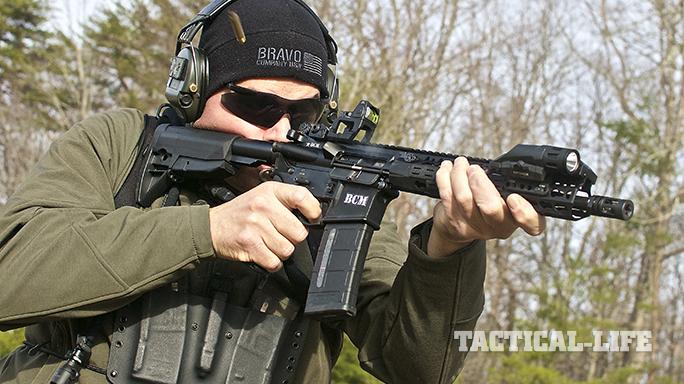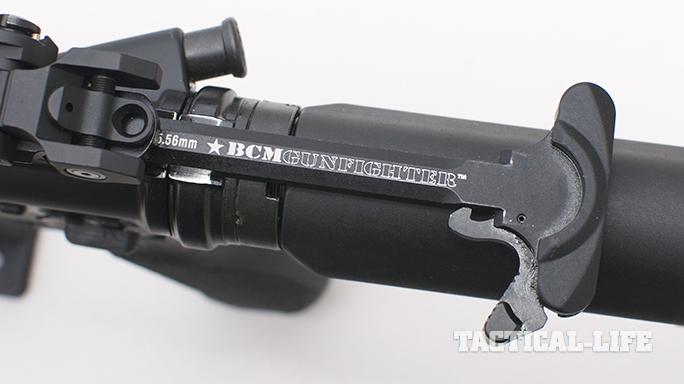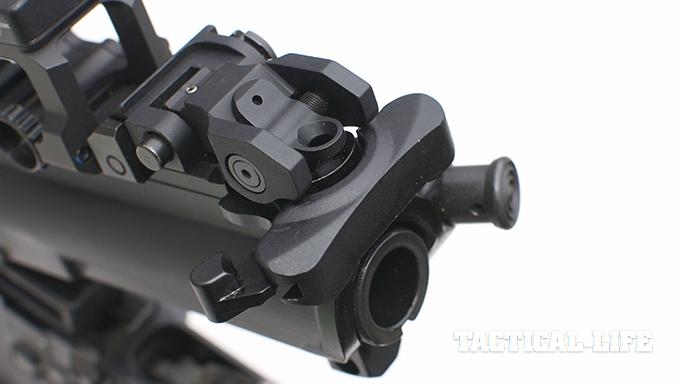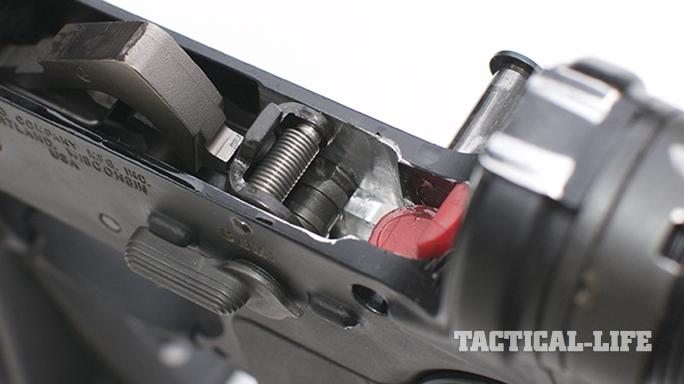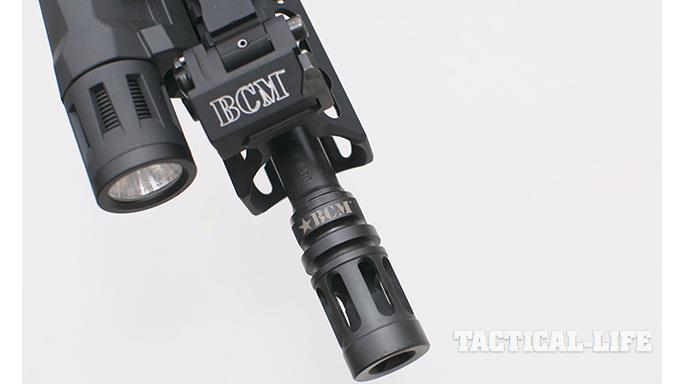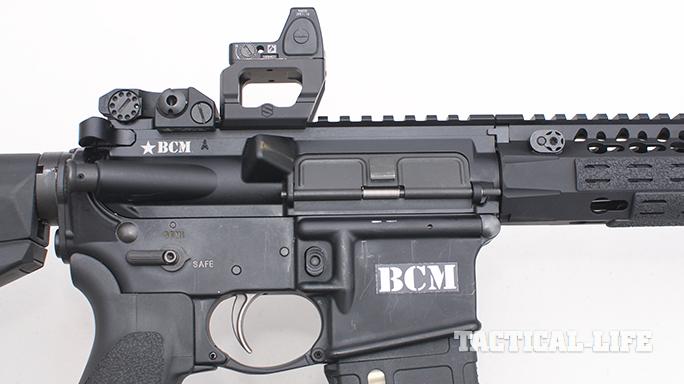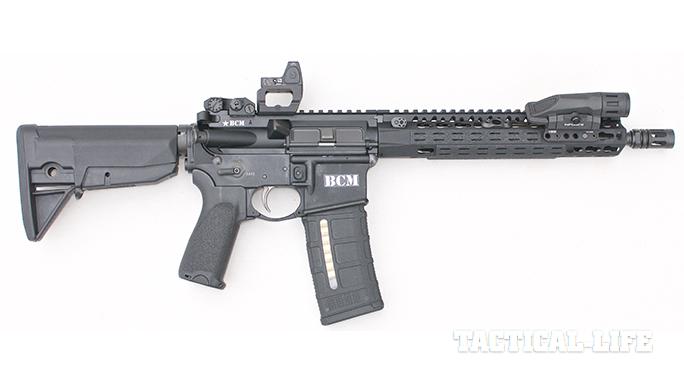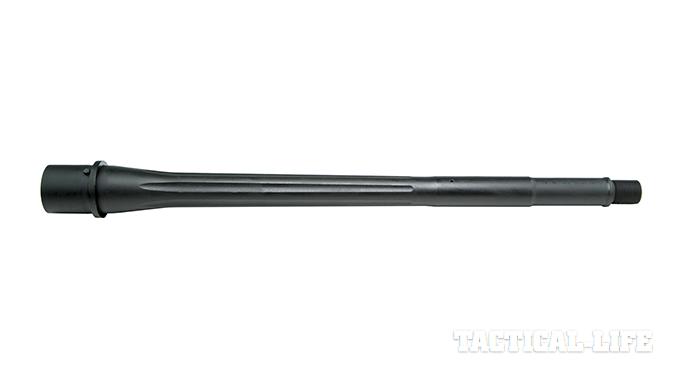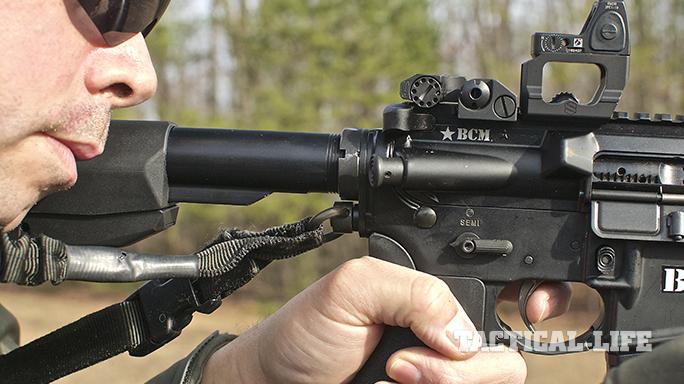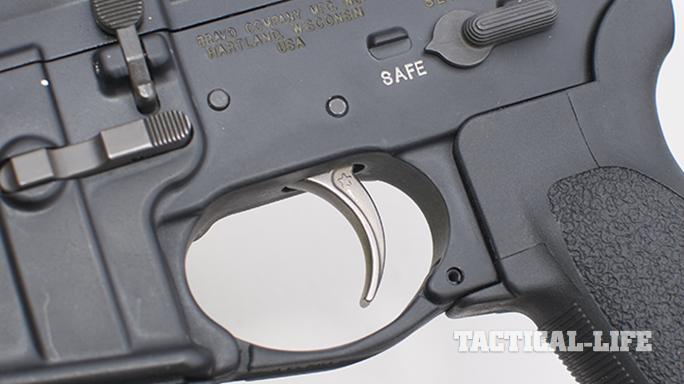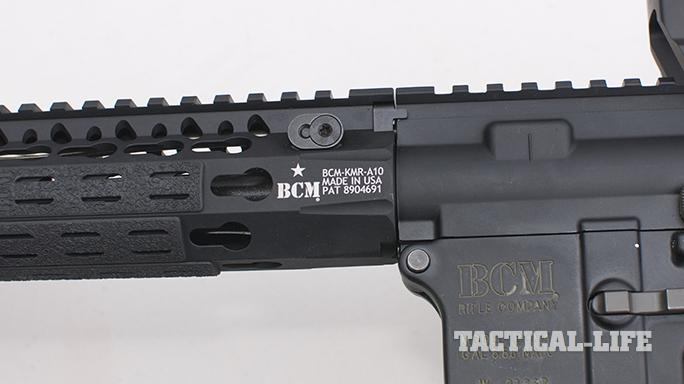In 2012, I was working on an article featuring some new finishes from a company offering nickel-boron (NiB) coating services. One of the products I was set to test was a nickel-boron-coated full-auto bolt carrier group. To test something like a nickel-boron finish, you have to get it really dirty, and that requires that the host weapon be capable of absorbing considerable abuse. So, I looked at the weapons I had on hand and knew that I needed to get my hands on something that was truly mil-spec so I could rule out any weapon-induced malfunctions. I reached out to Bravo Company Manufacturing (BCM) because I knew that its weapons were built correctly, ensuring I wouldn’t have any weapon-induced problems.
I discussed my article idea with BCM’s owner, Paul Buffoni, and asked if he’d provide an 11.5-inch-barreled carbine for testing. And I was honest up front and explained that the article wasn’t going to be focused on BCM. Instead, it’d mostly focus on the company providing the nickel-boron-coated bolt carrier group. It’s rare for a manufacturer to send out a product with full knowledge that the end-user is going to intentionally be hard on it. Furthermore, it’s even more unusual to find a manufacturer that won’t ask for creative control over what you add, detract or do with their product in relation to an article. This shows that a company trusts its products, and BCM certainly does. Suffice it to say that the carbine ran well. And lest I forget to mention this part, the test was run in full-auto, without lube, at a two-day rifle class.
BCM’s Light Fighter
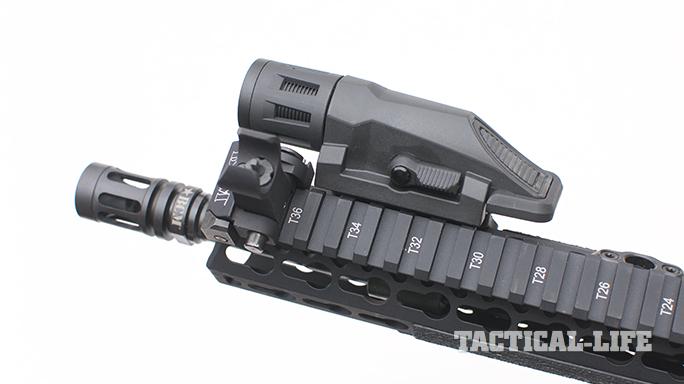
My relationship with Bravo Company is born of a deep respect for Paul Buffoni and how he does things. Also—and this truly bears noting before I get onto today’s subject matter—BCM demonstrates a rare acumen for business, and it shows in how the company treats its customers. I buy from its website regularly. BCM is excellent at keeping you apprised on what is happening with your order without you having to ask. Customer service is a lost art, so this was very much welcomed.
Advertisement — Continue Reading Below
- RELATED STORY: BCM RECCE Carbines – Wringing Out Bravo’s Two Blackout Aces
This review has a bit of a twist because this rifle is actually a machine gun. Many manufacturers in our industry put out products that are rated for full-auto use. However, the vast majority of customers do not have access to machine guns. So, this article is not only a test of a new product, but it’s also a test of how that product fairs under the abuse of full-auto work.
I already owned an older, registered select-fire BCM lower receiver, but it was in need of an update. With the arrival of the new upper—complete with a KeyMod Rail-Alpha (KMR-A) handguard and a fluted “Enhanced Lightweight” barrel—came a host of new BCM products as well. When I got this lower receiver in 2012, none of what you see on it now existed at the time. Lowers are timeless because they take none of the stresses of the firing process. Essentially, it was a new build from the ground up.
The Build
The carbine is now fully dressed out in all BCM components, including the backup iron sights, Modular KeyMod Light Mount, triggerguard, full-auto bolt carrier group, quick-detach (QD) endplate, Gunfighter Mod 2 pistol grip and Mod 4 charging handle, buttstock, KeyMod rail panels, KeyMod QD sling mount, full-auto safety selector, full-auto Polished Nickel Teflon (PNT) trigger unit and Mod 0 compensator. I also added a Trijicon RMR reflex sight on a Scalarworks Low Drag Mount (LDM).
Advertisement — Continue Reading Below
If you want to keep a rifle light, you mount a small sight on it. If you want to keep that small sight as light and properly zeroed as possible, you use the lightest, most precisely made mount possible, and that is the Scalarworks LDM. At a scant 1.32 ounces, it is the lightest RMR mount on the market. And surprise, surprise, you won’t sacrifice your zero when you have to remove the mount for a deep cleaning. When you train in the elements like I do, your guns get dirty. They require an occasional dunking in mineral spirits to get the muck out. So, yeah, this is a welcome feature in an optics mount.
Another component that really needs covering before we get into range time is the BCM Gunfighter Mod 0 compensator. I’ve used this muzzle device before and found it competent in reducing flash and keeping the front end down. I thoroughly enjoy BCM’s description of this device: “This compensator was not designed as a gamer’s comp. It was designed for tactical applications to reduce muzzle rise, flash signature, noise and lateral pressure.”
Yep, that’s it in a nutshell.
Advertisement — Continue Reading Below
Firing Full-Auto
The BCM compensator really stands out when you fire a full-auto burst. I found the weapon was laterally stabilized more so than I expected. The cyclic pulse was interesting because the compensator tended to pull forwards on the gun, which reduced felt recoil. There wasn’t much muzzle rise, either; much less much less than I’m accustomed to from a machine gun. It was an eye-opener. I really like this compensator!
Bravo Company’s new line of lightweight fluted barrels is a big shift for the company. I’m not sure if the company intended it, but this sure looks like BCM’s declaration that it’s gunning for the custom/production market. And as far as I can tell, Bravo Company is doing a darned good job of it.
This upper came with a lightweight barrel, which made me wonder if I wanted to press it into full-auto service. The heat buildup on machine guns is considerable, and since I’m a giver, my guns tend to get hot. When you see specs that say, “0.625-inch gas block,” you’re normally talking about a pencil barrel. I don’t do pencil barrels because they migrate badly when they get really hot.
Advertisement — Continue Reading Below
However, the very appearance of this 11.5-inch, 1-in-7-inch-twist, 5.56mm NATO barrel denoted something else. Its tapered profile is meant to defeat the negative barrel harmonics that are a very real problem with high-velocity rounds. Also, adding fluting to a barrel returns a measure of the rigidity that is lost when it was machined thin. Suffice it to say that this barrel really piqued my interest. It also bears noting that its light weight means that the fulcrum of the weapon is right at the center of magazine well. This makes for a neutrally balanced carbine capable of one-handed use.
Groupings
Seeing as how this is an SBR, and a battle rifle to boot, I didn’t bother doing the whole shooting-for-groups thing. Please understand that I’m not saying this rifle can’t “deliver the goods.” Far from it! I’ve been testing guns for a very long time, and I know that if a rifle is stacking rounds while zeroing at 50 yards, it’ll deliver 1-MOA groups with ease.
That’s right. While I was zeroing my iron sights, my shots began touching one another. Some were even on top of one another. I zero on AR550 steel targets. To be specific, they’re a pair of PT Hostage targets from Action Target. I use the torsos to find my zero, then I swing the 6-inch hostage-taker plates with outer edge hits while the barrel is hot to see if it can consistently deliver a tight “eye shot” from 50 yards. Fifty yards is the range at which a lot of our law enforcement snipers are deploying their precision bolt guns. So, if I consistently hit a 1-inch target at 50 yards with something that is meant to be a CQB weapon, I’m a happy camper.
Advertisement — Continue Reading Below
Rounds Downrange with the Bravo Company Carbine
There are few things I need out of a battle rifle: Reliability, ruggedness, a modicum of repeatable accuracy and parts commonality with other AR-15s. In the case of field repairs, I shouldn’t have to search out a proprietary component to get my gun back up and running. Everything I’ve described is here with this great BCM carbine.
At the range, I poured on the rounds to get this gun hot and dirty. Then I got out the good stuff: Sig Sauer’s 77-grain Elite Match Grade OTM rounds. You see, when you test rifles, you do not get a rough zero with the actual test rounds. You use whatever decent FMJ you have on hand to get that job done. As you do this, you’re going to experience all kinds of flyers, and you have to be OK with that. Then comes the moment when you get out your test ammo to really get that rifle dialed in tight. When I got out the Sig Sauer OTMs, the groups focused in on top of one another. It was sometimes hard to tell that I stacked rounds on a steel plate. That is darned good for an 11.5-inch-barreled carbine.
- RELATED STORY: Alpha Dog – Bravo Company’s RECCE-16 KMR-A Rifle
The addition of a 400-lumen Inforce WML set this carbine up right for day and night fighting. The WML is a light that I know well. I helped develop these lights during my time with Inforce, and I’m very proud of how far they’ve come. It’s amazing to see such high lumens produced from one battery. I installed the WML with BCM’s own Modular KeyMod Light Mount. This little piece of kit mounts solidly to the KMR-A handguard with a metal-to-metal lockup, and now this gun is ready for hard use.
Advertisement — Continue Reading Below
Parting Shots
Years ago, I asked Paul Buffoni why he didn’t sell any 10.5-inch barrels or uppers. He responded, “I don’t sell anything shorter than 11.5 inches because the loss of that 1 inch will cost you velocity, accuracy and gas pressure.”
That was back in 2012, before I knew what I know now. And guess what? Paul is absolutely correct. If you’re looking for the optimal battle rifle that delivers accuracy, reliability and the proper dwell time, look no further than an 11.5-inch-barreled Bravo Company carbine. The company has several options and barrel lengths to choose from.
Caliber: 5.56mm NATO
Advertisement — Continue Reading Below
Barrel: 11.5 inches
OA Length: 27.5 inches
Weight: 6.2 pounds (empty)
Advertisement — Continue Reading Below
Stock: Collapsible
Sights: Flip-up front and rear
Action: Direct impingement semi-auto
Finish: Matte black
Capacity: 30+1
MSRP: N/A
For more information, visit bravocompanyusa.com.
This article is from the August/September 2017 issue of “Tactical Weapons.” To order and subscribe, visit outdoorgroupstore.com.
